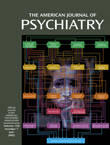Suicide Attempts in Patients With Bipolar I Disorder During Acute and Maintenance Phases of Intensive Treatment With Pharmacotherapy and Adjunctive Psychotherapy
Abstract
OBJECTIVE: Lifetime rates of suicide attempts among patients with bipolar I disorder were compared to rates during a 2-year period of intensive treatment with pharmacotherapy and with one of two adjunctive psychosocial interventions. METHOD: Subjects entered the study during an acute mood episode. Subjects were treated with primarily lithium pharmacotherapy and with either psychotherapy specific to bipolar disorder, which included help in regularizing daily routines, or nonspecific, intensive clinical management involving regular visits with empathic clinicians. Data on prior suicide attempts were obtained retrospectively from interviews with the NIMH-Life-Chart method. Data on suicide attempts during the clinical trial were collected systematically throughout the protocol. RESULTS: The rate of suicide attempts was 1.05 per 100 person-months before patients entered the trial. Patients experienced a threefold reduction in the rate of suicide attempts during the acute treatment phase (until the patient achieved stabilization, defined by completion of 4 weeks during which the patient had a mean score of ≤7 on the 17-item Hamilton Depression Rating Scale and ≤7 on the Bech-Rafaelsen Mania Scale) and a 17.5-fold reduction during maintenance treatment. Poisson loglinear regression analysis modeling the relationship between the observed rates and the three protocol stages (pretreatment, acute, and maintenance) showed that the reductions were significant in the acute and maintenance phases, compared with the pretreatment phase. No patient with one or more suicide attempts before entering the trial attempted suicide during the protocol. CONCLUSIONS: A treatment program in a maximally supportive clinical environment can significantly reduce suicidal behavior in high-risk patients with bipolar I disorder.



